new posts in all blogs
Viewing: Blog Posts Tagged with: indie, Most Recent at Top [Help]
Results 1 - 25 of 33
How to use this Page
You are viewing the most recent posts tagged with the words: indie in the JacketFlap blog reader. What is a tag? Think of a tag as a keyword or category label. Tags can both help you find posts on JacketFlap.com as well as provide an easy way for you to "remember" and classify posts for later recall. Try adding a tag yourself by clicking "Add a tag" below a post's header. Scroll down through the list of Recent Posts in the left column and click on a post title that sounds interesting. You can view all posts from a specific blog by clicking the Blog name in the right column, or you can click a 'More Posts from this Blog' link in any individual post.

By:
Heidi MacDonald,
on 6/18/2015
Blog:
PW -The Beat
(
Login to Add to MyJacketFlap)
JacketFlap tags:
Small Presses,
Comics,
Breaking News,
Independent,
indie,
Kickstarter,
Top News,
Crowdfunding,
Top Comics,
First Law of Mad Science,
Add a tag
In 2008, Oliver Mertz and Mike Isenberg came up with the idea for First Law of Mad Science, an affecting and strangely portentous story about a man whose innovative retinal implants a la Google Glass end up having major ramifications on the future of the world and the safety of his family. Seven years later, the co-writers, along with artist Daniel Lapham, have launched a kickstarter to fund the release of the series’ first collected trade.
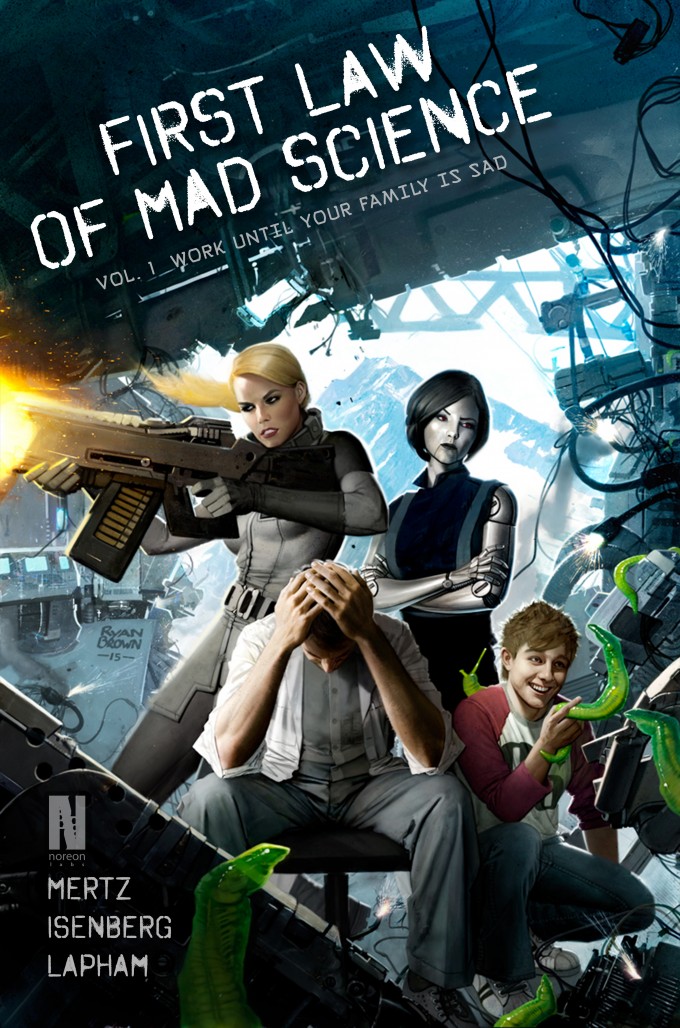
A summary from their kickstarter:
Super-scientist George Baker’s newest invention, electronic retinal implants known as “Cyber-Eyes,” are nothing short of amazing. So amazing, in fact, and so cheap and easy to get, that some 40% of the population has gotten them within their first year on the market. But they aren’t perfect. Far from it. When things start going inexplicably and bizarrely wrong with the original test subjects, George and his family will have to find out why, before the problem spreads and causes worldwide panic. Along the way, they’ll uncover ancient civilizations, corporate conspiracies, sinister cults, other-dimensional creatures, awesome robots, subterranean cities, and Things Man Was Not Meant To Know.
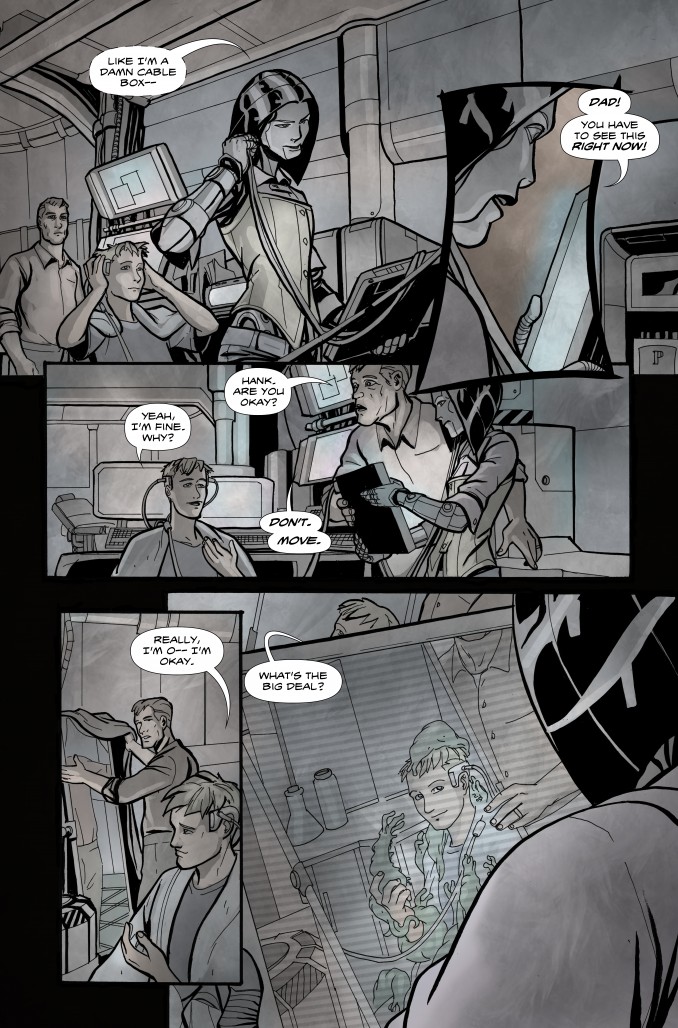
In addition to several interesting backer rewards (including a bombastic night out at the karaoke bars with Isenberg), the Mad Science team has put together a special anthology featuring stories set in the FLOMS universe by industry veterans including Frank Barbiere and Amy Chu:
Science Club Mixtape is an anthology issue set in the cyberpunk meets Lovecraftian horror universe of First Law of Mad Science. Each stand-alone story will build upon that universe and shine a light into some pretty dark corners.
The anthology features stories written and/or illustrated by Shawn Aldridge (GoGetters, Vic Boone), Frank Barbiere (Five Ghosts, Avengers World), Michael S. Bracco (Novo, the Creators), Jason Copland (Pop, Daredevil), Stan Chou (FUBAR, Oxymoron II Anthology), Amy Chu (Sensation Comics Featuring Wonder Woman, Vertigo Quarterly), Anthony Del Col (Kill Shakespeare, Sherlock Holmes vs. Harry Houdini), Savanna Ganucheau (Toe Tag Riot), Leland Goodman (Basement Dwellers), Mike Isenberg (First Law of Mad Science, FUBAR), Daniel Lapham (Warhammer 40K, First Law of Mad Science),Conor McCreery (Kill Shakespeare, Sherlock Holmes vs. Harry Houdini), Jeff McComsey(FUBAR, Flutter), Oliver Mertz (First Law of Mad Science, FUBAR), Jamie Noguchi (Yellow Peril, The 47 Bronin), Pete Toms (POP, Sacrifice), and Sean Von Gorman (Toe Tag Riot, Pawn Shop).
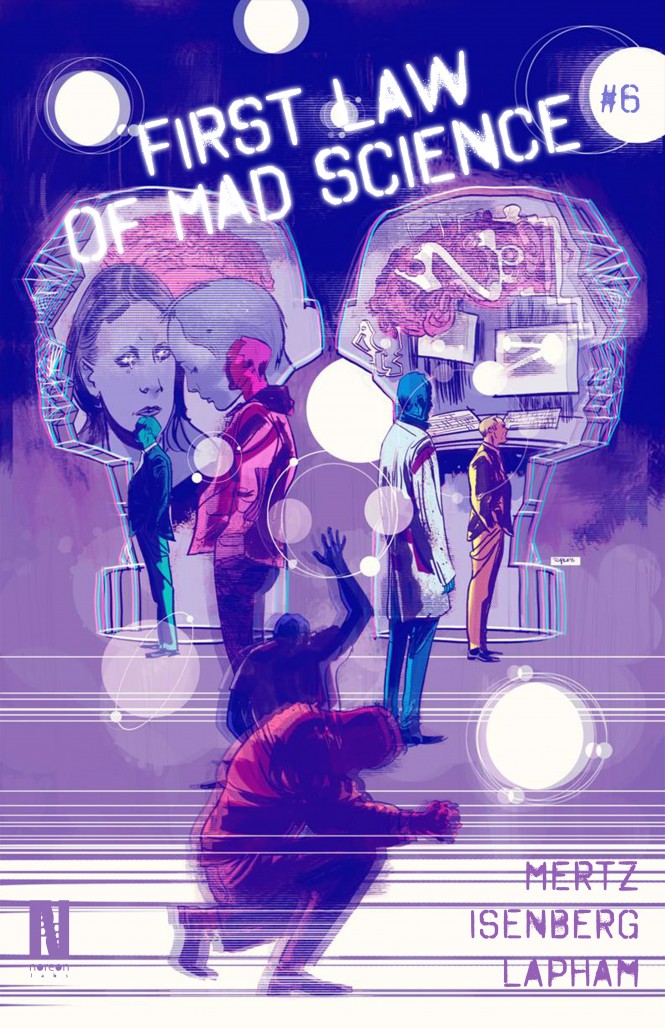
The team is seeking $15,000 to fund the project, with the vast amount going towards printing costs. The dedication they’ve shown towards this project is admirable, and I think the comics have been incredibly entertaining thus far. Give it a look and see if you agree.
MERRY CHRISTMAS!
Join Leslie Helakoski and Darcy Pattison in Honesdale PA for a spring workshop, April 23-26, 2015. It's a great Christmas present to yourself or a writer friend! Full info
here.
COMMENTS FROM THE 2014 WORKSHOP:
- "This conference was great! A perfect mix of learning and practicing our craft."�Peggy Campbell-Rush, 2014 attendee, Washington, NJ
- "Darcy and Leslie were extremely accessible for advice, critique and casual conversation."�Perri Hogan, 2014 attendee, Syracuse,NY
About eighteen months ago, my writing career pivoted: I decided to commit to self-publishing my work. I’ve not talked about it much because I’ve been so busy being an author and publisher, but I’m going to take time to reflect on the experience and look toward the future.
WHY INDIE PUBLISH?
There are many reasons why I decided to go this direction but in the end, it’s a question of creativity. For many years, I’ve felt hobbled by the traditional publishing world because I can and do write a lot. Independent publishing offered me a chance to write and publish many titles in a short time period. It’s also offered me the possibility of creating a steady monthly income.
Setting Up an Indie Publishing Company
When I committed to funneling all of my work though my own publishing company, I had to make business choices.
What type of company? Self-proprietorship, C or S Corporation. Name of company?
Buy a domain, set up a website, open a business bank account, get a local business license, get a sales tax ID, etc. Don’t discount the business side of indie publishing; but don’t fear it, either. There’s lots of help for these business decisions. In the end, I set up MimsHouse.com — go take a look; I’m excited about this opportunity.
Then, to work! The first eighteen months have been about three things: production, distribution and accounting. I’m assuming that writing is always happening in the background, for it is, in fact, the foundation of everything else.
Accounting. I’m using QuickBooks and this is the hardest thing I do. I just keep plugging away at learning good business accounting and long for the day when I can afford an accountant.
Production. The first question to answer is formats. I decided to try every format possible: paperback, hardcover, eBooks. That sounds easy enough. Ha! It’s complicated. After 18 months, here’s my current configuration.
- Createspace.com paperback in two versions. One version is with my own ISBN and is for general distribution; a second version is with a Createspace ISBN and I only enable it for distribution to Baker and Taylor.
- LightningSource.com (NOT Lightning Spark which is the only section of the company currently open to newcomvers). I currently do paperback and hardcover books here.
- eBooks. OK, this is where it gets tricky because each platform wants a version for their proprietary platforms. Currently, you’ll find my ebooks on Kindle, iBook, Nook, Kobo and various educational publisher’s platforms.
File production for the print and ebooks varies depending on the type of book. Also, technology changes every six months or so, which means that each time I come back to produce files, I have to reevaluate previous production methods to see if they are still the best, are compatible with the current ebook and print standards, and are the most cost-effective.
- Novels that are mostly text-based or short chapter books with b/w drawings. I create the book in MSWord, making sure to be very strict on the style sheets. Word exports to print quality Adobe pdfs for printing on paper. I use Jutoh to convert these to ebooks.
- Color picture books are laid out in Adobe InDesign, which a access via a $20/month subscription; the October, 2014 update to InDesign has made export to ebooks simple. I mean VERY simple. I tried the mid-year release of Kindle Kid’s Book Creator program and found it easy to use; however, there are two main problems with it. First, it only creates the .mobi files for Kindle, and I still had to create epub files for other distributors; second, it creates a bloated file which means you have huge download costs from Kindle. At 70% royalty, they charge the publisher $0.15/MB download fee, which amounts to a “printing cost.” A file created with the Kindle Kid’s Book Creator program is easily 6-8 MB, or $0.90-$1.20 per download. You have two choices: charge a lot for the book or drop to the 35% royalty which doesn’t charge a download delivery fee.
Examples:
$2.99 at 70% payment, 8MB file
$2.99 x 70% = $2.093 – $1.20 delivery fee = $0.893/book
$2.99 at 35% payment
$2.99 x 35% = $1.0465/book (NO delivery fees at this rate)
InDesign, on the other hand, takes the same book and creates files of 3-4MB.
$2.99 at 70%, 4MB file
$2.99 x 70% = $2.093 – $0.60 delivery fee = $1.493/book
My choices, then are to profit $0.89, $1.05, or $1.49 for each eBook priced at $2.99.
InDesign’s smaller file sizes mean money in my pocket, AND flexibility in what I charge. I could drop prices to $1.99 for a sale and still make a profit of $0.79/book; it’s my choice.
Math. It runs the business and it affects production methods!
Illustrations. Another problem of production has been obtaining illustrations for my color picture books. Fortunately, the first couple books were done in a joint business arrangement with Kitty Harvill. Since then, I’ve had to find funds to pay illustrators. Behance.net has been a great place to find new illustrators. That is Adobe’s social media site for artists, where they post their portfolios. Ewa O’Neill’s debut books will be out in February; and Rich Davis, a local longtime friend and amazing illustrator, struck a deal for b/w line drawings for my short chapter series. So, I drew from friendships and from an artist’s social media site to find quality, exciting art. This has been one of the most creative and fun parts of the process, to work with some great talents to produce amazing books. I’ve learned a lot about being an art director and working with artists—it’s just fun.
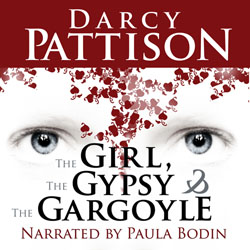
AudioBooks. Amazon’s ACX program is in its infancy, but it offers authors an entre into the audiobook world. By hooking you up with a group of narrators who will audition for your book, you have control of the process and can end up with some exiting audio books. It’s hard to say which is my favorites: I love the actress Paula Bodin’s reading of my novel, The Girl, the Gypsy, and the Gargoyle; she truly brings the story to life. Monica Clark-Robinson brings her acting skills to the production of Saucy and Bubba, which is especially exciting because she’s a local actress and author. Josiah Bildner knows how to crack a joke! His narration of the Aliens Inc, Series, Book 1: Kell, the Alien shows his genius in timing of comedy.
Distribution. The third piece of the puzzle for the last eighteen months has been distribution. This means I’ve had to think hard about where my books might sell. Who is my customer? Where does that customer already buy books? What price points do they want/need/like?
Because I mostly write children’s novels and picture books, eBooks haven’t been as big a factor (though, I think that is changing in interesting ways). My customers are parents, teachers, and school librarians. Teachers and school librarians buy from education distributors, rather than from the trade markets. They can and they do buy from Amazon, B&N and other online places, of course. But the bulk of their budget is spent at places that cater to their needs.
I’ve picked up distribution from Follett School Solutions, Mackin, Permabound, and Child’s Plus. The first three also have emerging eBook platforms which I think will become increasingly important. It means more production work because they want yet another format! It’s just a different type of pdf to export, but it means another step.
Pricing. Also, this sales channel brings some challenges in pricing. 1-to-1 pricing means a school building buys one ebook and has the rights to put it on one device only. 1-to-many pricing means a school building buy one book and has the right to put it on an unlimited number of devices.
Naturally, educators prefer the 1-to-many pricing structure; but this is so new that there’s no best-practices standards on how much extra to charge. You don’t want to leave money on the table; however, you want the pricing to be attractive.
I’m told that some publishers are asking 2x, 5x or even 15x the 1-to-1 price. But no one really knows what price structure will work. For a Newbery Award winning book, you could likely charge 20x—which in effect gives a full class set to a school building—and educators will gladly pay it. In other words, the popularity of a title, the likelihood of its use as a class set, and factors such as this should determine the 1-to-many pricing.
Also interesting is that the school pricing tends to stay at or near the suggested retail pricing, with few discounts. Translation: you’ll make more per book.
The first eighteen months have been busy. I’ve learned to pace the writing with production and marketing efforts. I’ve set up production protocols that allow me to be efficient in putting the books into multiple markets. And I’ve picked up distribution from education publishers, while also making sure I cover the digital and print distribution channels.
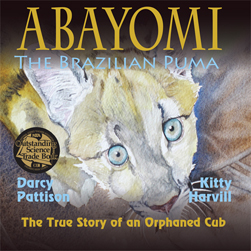
2015 NSTA Outstanding Science Trade Book.
Because I come from the traditionally published world, I also decided early on that I would submit books for awards. That meant Mims House joined the Children’s Book Council, which gave me access to a variety of programs. In November, 2014, I learned that my nonfiction picture book,
Abayomi, the Brazilian Puma: The True Story of an Orphaned Cub was named a
2015 NSTA Outstanding Science Trade Book.
I was ready. I already had the book in distribution to all major channels, including education distributors. Immediately, I sent press releases to those channels—and sales have picked up. I expect that early next year will bring even more sales for this award-winning book.
Someone once said that marketing means you produce demand for your books. You do that first and foremost by writing and publishing a great book. After that, you have to break through the noise and get noticed; and then you need to keep the book in the foremost of your customer’s mind for as long as possible.
Marketing is what I’ll focus on for the next year. I’m trying everything from online ads to awards programs to social media blasts. Ask me at the end of 2015 what I’ve learned about marketing.
WHAT I’VE LEARNED IN THE LAST 18 MONTHS
- Indie publishing is refreshingly creative. It’s not about control for me, though, I hear that sentiment often. Instead, it’s about creativity. It’s opened creative channels for me in the production of the books; and it will continue to challenge my creativity in marketing. Both of those have challenged the foundation of selecting stories to write: I now start out with a stronger consideration of audience. I like how the creativity builds as I engage in more aspects of the book production, distribution and marketing. Working with creative artists and audio narrators is inspirational, too.
- Patience is crucial. I went into this with a long-term perspective. As an indie publisher, I am a small business owner. In the U.S., most small businesses fail in the first year; most don’t make a profit until their fifth year. From day one, I had books in distribution so I’ve made money. I sold a website domain for a nice profit and that added to my reserves. Financially, the cost to enter this business is extremely low, and it’s been easy to build up the income levels.
Still, patience is crucial because as an indie publisher I can’t afford the book launch splash; instead, I must rely on a slow growth of a title as word-of-mouth grows. You hear stories of fantastic sales of ebooks—but that’s rarer for children’s books. It’s just a different market, and I constantly remind myself that I am building for a future so I don’t need to be impatient.
- Try everything. Test everything. This year, I’ve said YES to everything I could. I’m testing to see where and how I can reach an audience that likes and will buy my work. I’ve done Facebook ads, GoogleAdwords, displayed at various local and regional events, set up a sales channel on my own website, and much more. I don’t have lots of capital, so I’m careful in choosing where to put effort; but my attitude is to try something new if at all possible. Take risks.
- Write. Through all of this, the writing remains. It’s the foundation for everything else.
CHALLENGES AND PREDICTIONS FOR 2015: Indie Books for Children
- Pay attention to the education market. The education market for ebooks is poised to explode; I hear of more and more schools going 1-1, or one ipad/tablet for each child. I think the education distributors such as Follett, MackinVIA, and Permabound are going to be players, but also look for the sleeping giant, Apple, to come on strong. Since the iOS8 update this fall included iBooks as a native app, I’m moving many more books on Apple than on Kindle. It’s going to be a wild ride as companies jockey for position and as the pricing structures shake out. I’m working hard to put more books on the iBook platform; see my author page on iBooks.
- Hard work. Indie publishing will continue to expand, but I think the boom of 2008-2014 has played out. Now, you’ll have to dig in and work harder to get noticed. It’s only limited by your imagination, your work ethic and a bit of luck. And beware of rip-offs who promise to make your book a best seller!
- Change is inevitable; be ready to adapt or pivot. 2014 saw a rise in the subscription model of selling books and a host of startups that touted one way or another of promoting, marketing and selling books. Inevitably, most of these will fail; but no one knows which will fail and which will succeed. You’ll have to pay attention to the unfolding events and take advantage of sales opportunities as they arise.
- Global media company. One interesting idea is to consider myself a global media company. This year, I did an online video course of 30 Days to a Stronger Novel to accompany a book’s launch. And illustrator Kitty Harvill, who lives in Brazil half the year, is working on a Portuguese translation of Abayomi, the Brazilian Puma. (If it goes through that will be my 9th language! English, Spanish, Swedish, Danish, Norwegian, Arabic, German and Taiwanese Chinese.) Will the digital world allow for an expansion into other media and a global market? Of course. It’s a question of how to approach it. It’s one area I’ll be paying attention to in 2015, whether or not I actually make direct moves on either front. I’ll be reading anything possible about the expanding German market, and perhaps experiment (Try anything!) with more video or audio.
- One key to success: own your own audience. You’ll see less emphasis on social media activity such as growing a Facebook Fan page. As the major social media companies work to expand income, they continually change the rules. In essence, they own your audience, not you. Instead, smart authors will build their own mailing lists of loyal fans who want to hear about new releases. Get the Fiction Notes newsletter and the MimsHouse newsletter here.
In the end, all of us in publishing are asking one question: How can I put more of my books into the hands of the right audience in the most profitable manner? We’re answering that in a myriad of ways. How do you answer that question?

Find Darcy Pattison Books in the iBook Store
As a hybrid author, I have one foot each in two very different worlds. I am traditionally published and as an author/publisher, I release my own books.
The worlds operate at tangents to each other and one point of contention is this question: how long does it take you to write a novel? Independent author Dean Wesley Smith has recently finished a year of blogging about his daily output, which includes emails, blog posts, novels and short stories. For example in June, Smith wrote 52,800 words of fiction, 14,700 nonfiction, 14,000 for blog posts, and 827 emails of about 22,900 words, for a grand total of 105,200 words.
However, traditionally published authors often agonize over a novel for two or three years. Or more.
Let’s just ask the question straight out? Which method of writing produces great novels? Both.
And don’t let anyone convince you otherwise! Not editors and not indies.
Then why is there such a wide range of discussion on the merits of the two viewpoints on the speed of writing?
Fast or Slow? From the Business POV
From a Traditional-POV, publishers generate over 50% of their income on their backlist, books that continue to sell 1000 copies a year and do so year-after-year. Yes, they need to add new books each year, but because their income isn’t starting at zero, they can be very selective in adding new books. Another strength of traditional publishers is that they have multiple sources of new stories each year, i.e. multiple authors. In fact, they will seldom put all their eggs in one basket, especially not yours. If you write quickly, a publisher will only take ONE of your mss in any given year, at least until you build a stellar reputation.
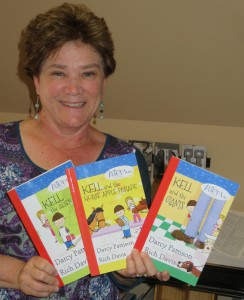
Writing the Aliens, Inc series was fast! Each book took a month to write and after comments, a week to revise. By contrast, a middle grade novel might take me a year to write.
By contrast, from a Business-POV, indie author/publishers need to write quickly. They need to quickly build a backlist that generates an ongoing income. One-book-wonders, or authors who only write one book every five years, would be foolish to go indie. Let’s say you need $1000 income from your books each month. If you only have one book out that one book MUST generate $1000 month-after-month. If, however, you have ten books out, each book must AVERAGE only $100 in sales, month-after-month. In any given month, Book 3 might sell zero and Book 9 might sell $1000. The key is that the books must AVERAGE only $100. If Book 5 contributes only $50, but does it consistently, month-after-month, that’s a valuable book for you. For a traditional publisher, though, that’s not enough income generated and they would put it out of print. (And some publishers are more wont to cut the lower producing books than others.)
Traditional publishers source stories from multiple sources, spreading the risk among many authors. Indie author/publishers have only one source of stories, and they must maximize their output.
Fast or Slow? From the Creative POV
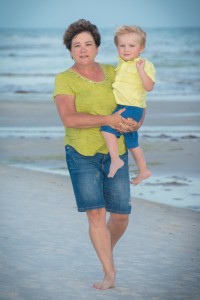
As my grandchildren are learning to walk and run, it’s tempting to compare the age at which they take that first step. NOT FAIR! Each child–like each novel you write–develops at its own pace. Comparison does nothing but add unnecessary anxiety.
Thus, you’ll hear editors saying, “Take your time. Get it right.”
Of course, editors advise writers to slow down. They can’t handle ten books from you in one year. If you write ten in a year, you’ll likely need 5-10 publishers (if you can find them), at least until you build that reputation for blockbuster sales.
Is there value in slowing down? Yes and no. Yes, it’s good to take the time to write well. Speed CAN lead to sloppiness, but it doesn’t necessarily. On the other hand, if your normal writing speed is fast, and you manage to turn out good stories, then slowing down feels like being hobbled. For some, it’s boring to write slow and only work on one project at a time.
The Indie world emphasizes the need for speed. Dean Wesley Smith once asked a group of writers how many words they write in an hour. I shrugged. I could easily write a 1000-words in an hour. Then he suggested that I should be writing 8000 words/day, which would be 192,000 words or about 4 middle-grade novels (or two full-length adult novels) per month.
Wait. Does that math work? Yes.
But it’s also not that easy. When I know what I want to write—such as this blog post—I can easily turn out 1000 words per hour. But writing a novel is a different task. I like the analogy of a spider spinning a web. From her gut, she must create the raw materials of spider web silk, and then like an architect, she lays in the foundations of her web, hanging for her life from that slender silk while she does so. Once the foundation threads are laid, she spins more silk—from her very gut—and weaves a circular web on that foundation. She then lies in wait for a victim to arrive.
Novelists spin characters and conflicts from their very guts and soul. We lay in the foundation of a novel’s plot, and then spin a story around that foundation. Finally, we lay in wait for a reader to be captured by the story.
Once I get a foundation laid, I can spin out that 1000 words per hour. It’s that first part, creating the story’s silk from my very soul, that is hard. As the creator of the Novel Revision Retreat, I also understand the imperative of revising multiple times to get a story right. I teach and practice that a first draft tells you what the story is; the following drafts are for finding a way to tell the story in the most dramatic way possible to hold readers’ attention.
My feet are firmly in both worlds. I need to produce works so I can build my indie backlist and thus up my income levels. However, I also understand that my process is slower than I’d like.
I am working on various ways to boosting productivity, such as learning Scrivener. But in the end, I’m left somewhere in the middle, and I don’t think it’s a matter of straddling the fence.
Honor Your Own Process
Instead, I think I am honoring my own process. For blog posts and picture books, I can and do write fast. But for novels, the thinking process is much slower than my ability to type. MUCH slower. It might take me six to twelve months to do this next novel. I refuse to be intimidated by the Indie crowd into going faster. Likewise, one of the appeals of being a hybrid or indie author is that no one can force me to slow down. I don’t have to wait a year for an editor to get back to me with revision notes. I don’t have to wait for an editor who promises a contract for fourteen months, and then rejects the novel, sending me into a new round of hopeful submissions.
Slow writing doesn’t equal good.
Slow writing doesn’t equal bad.
Fast writing doesn’t equal good.
Fast writing doesn’t equal bad.
Instead, I will write at the pace each piece of work demands and allows.
Working with Deadlines
There will always be the Tyranny of the Urgent. This week I’ll be going to North Andover, MA to teach a Novel Revision Retreat and that means I must have the teaching materials done by Wednesday. That’s my writing focus this week.
Fortunately, other deadlines loom in the future and those deadlines will demand that other projects consume my attention. For traditional publishers, the deadlines are few and far between. For indie publishing, I need to have books come out about six months before publication so they can be sent for review. Can I delay a book a month? Easily. But I try to set a publication date and stick with that. It’s a business thing.
Some argue that if you can write quickly under a deadline, then you could do it anytime. Not for me. Because a deadline FOCUSES my writing and writing time in a way nothing else can do.
In other words, external deadlines also affect my output. I still honor what a piece of writing demands, but at the back of my mind, I know what that demand is. And when I add that to the deadlines, I can instinctively allow more or less time before a deadline for that piece.
Do You Work Fast or Slow?
Good. Write at the pace that works for you for any particular project.
Learn from productivity tips and use whatever software is most productive for you. Don’t be intimidated by editors who demand slow work, or contemporaries who rave about the benefits of writing fast. In the midst of the swirl of opinions, write. Your way. Your stories. As David Bayles and Ted Orland say in Art and Fear, “Your job is to learn to work on your work.” I’ll add: And do it at your own pace.


By: Angela Muse,
on 12/25/2013
Blog:
4EYESBOOKS
(
Login to Add to MyJacketFlap)
JacketFlap tags:
Family,
kids,
Literature,
writing,
parenting,
owl,
holiday,
sale,
indie,
December,
E-book,
Amazon Kindle,
The Christmas Owl,
Author,
Amazon.com,
blog,
$.99,
Christmas,
Amazon,
children's book,
Add a tag
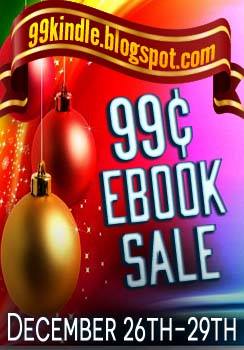
Get ready to load up those new kindles with some fantastic ebooks that will be specially priced at $.99 from December 26th through December 29th. Loads of authors in various genres are joining in on this holiday sale. Click the logo above to check out the main page for this sale and start downloading today.
Our children’s holiday story, The Christmas Owl, will be reduced to $.99 during this sale. An Amazon best selling children’s story, The Christmas Owl , is sure to become a holiday classic. A Barred owl becomes injured and must ask others for help. He promises to give back to those who have a generous heart and he is true to his word. This colorful tale told in verse is vividly illustrated to capture the attention of children aged eight and under.
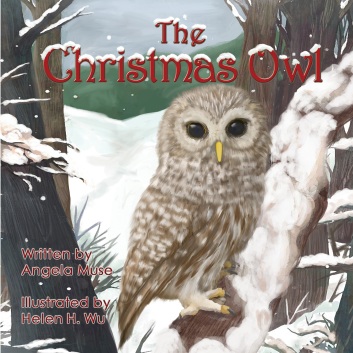



By:
Darcy Pattison,
on 9/22/2013
Blog:
Darcy Pattison's Revision Notes
(
Login to Add to MyJacketFlap)
JacketFlap tags:
tattered cover,
book marketing,
independent,
denver,
bookseller,
indie,
book store,
espresso book machine,
POD printer,
Add a tag
I am traveling this week, visiting family in Denver. And we went to visit the Tattered Cover independent bookstore.
I like to visit indie bookstores when I travel because it gives me a better idea of the industry as it plays out across the nation. And it’s fun to see all the different ways that people display books.
Here are a couple pics of different areas of this great indie bookstore. Click to see the photos full size.
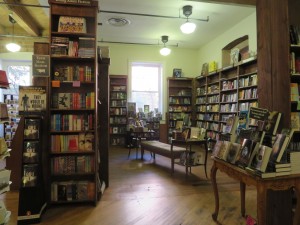
Tattered Cover Indie Bookstore, Denver, CO.
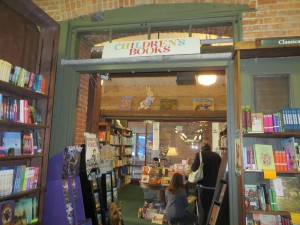
Tattered Cover, Indie Bookstore, Denver, CO. Children's section.
One of the interesting things at Tattered Cover was the Espresso Book Machine. This is a print-on-demand printer that both prints and binds a book while you watch. I’ve heard of them for several years, of course, but never seen one. It’s large. Watching the pages flip through the printer is fascinating. Tattered Cover Press is the official designation of books printed here.
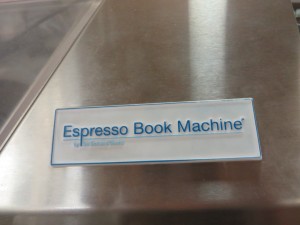
Espresso Book Machine: POD Printer
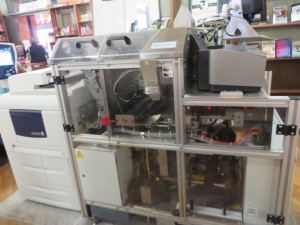
Tattered Cover Press print-on-demand Espresso Book Machine.
I also stopped by the Kobo ebook reader section and checked out all of their selection. (Read my recent post about why you should pay attention to Kobo. Hint: It has to do with indie bookstores.) Buy my books in Kobo format!
Of course–one of the best reasons to visit Colorado this time of year is the aspens!

The best reason to visit Denver this time of year: aspens turning golden.
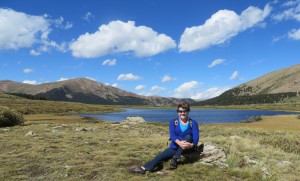
Darcy at Mt. Bierstadt in the Rocky Mountains. We accidently tried this 14er (14,000 ft) hike and because we weren't prepared, we only made it to about 13,000 ft. Great day!

For the last few years, the best options for Indie publishers to publish an eBook have been Kindle, Nook and Apple iBooks. Now, there’s another big competitor on the scene, Kobo Books.
Kobo’s Writing Life opens the market to authors and provides exciting new opportunities. Especially exciting is the collaboration with independent bookstores and the American Bookseller’s Association. Today, Mark Lefebvre, Director of Self-Publishing and Author Relations for Kobo stops by to discuss their new interface for Indies. I met him at a conference in Oregon in July and immediately went home to upload my ebooks to KWL. It was a simple process and I wanted to share this with you.
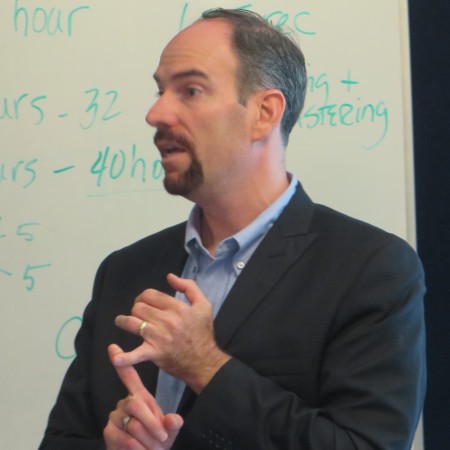
Mark Lefebvre, Director, Self Publishing & Author Relations, Kobo Writing Life. I met Mark at a conference in Oregon in July, 2013.
Question: At the Oregon conference, I had my first chance to see a Kobo reader and thought it was fantastic. I loved the Kobo Mini’s small size, how it felt in the hand and the clean reading interface. How does the Kobo ebook reader compare to Kindle, Nook and iPads? Is there a color Kobo and do pages rotate from portrait to landscape?
Answer: Well, first of all I should explain that there isn’t a single Kobo reader, but rather a whole family of devices and apps – there’s pretty much a device or app for virtually any type of person, matching their own style and preference in an eReading experience. Yes, this might sound like a sales pitch, but there really is an amazing variety of options available in our devices.
We have e-ink devices such as the Kobo Touch , a 6” Pearl E Ink touchscreen device that the #1 rated device by WIRED magazine, to the Kobo Glo, which, like Touch, can stored up to 1000 eBooks, but has a built-in light that has been proven to be the most even 6” front-lit eReader, allowing comfortable reading day or night.

Kobo Touch eBook Reader
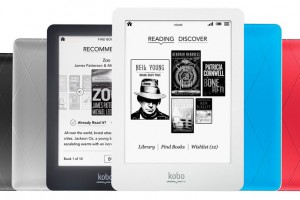
Kobo Glo eBook Reader
Our Kobo mini is the world’s smallest and lightest full-featured eReader with a 5” display, great for reading on the go, as it fits more easily into purses and jacket breast pockets. For die-hard readers who have to have the best of the best in eink reading experiences, Kobo Aura HD provides a premium reading experience for the discerning reader. With a 1440 X 1080 resolution and 265 dpi, along with a unique ergonomic design Aura HD delivers the ultimate crisp and natural feeling reading experience, and the built-in light allows for reading in all levels of light.
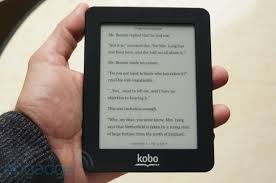
Kobo Mini eBook Reader

Kobo AuraHD eBook Reader
Our tablet, the Kobo ARC is a fully certified Android tablet with all of the tablet features that you would expect, such as a 1.5 GHz process and 1 GB of low-power RAM, but designed with the book lover in mind. Apart from the unique Tapestries discovery experience and Kobo’s wonderful Android reading experience (which does auto-rotate from portrait to landscape, unless you set a user preference to lock the screen in place), this is a fully functioning Android environment, meaning you have access to all of the apps available through Android (yes, including apps for competitor eRetailers, so you can read your Kindle and Nook library titles on your Kobo ARC)

Kobo Arc eBook Reader
Apart from the readers, Kobo does have free apps for every single smart-phone operating system, MAC and PC desktops.
Question: Tell us about Kobo Writing Life. Why did Kobo establish this new option for Indie publishers and authors?
Answer: Kobo Writing Life was created as a way of removing barriers and allowing authors who wanted to work directly with Kobo to get their indie-published works into our catalog as easily as possible.
Kobo, a very collaborative company, accepts daily feeds from places like Smashwords and BookBaby along with hundreds of other distributors/aggregators, but many authors wanted to be able to connect directly with us and have tighter control over their prices, metadata, etc. So, after spending several months listening to authors (and using the existing platforms available – remember, many of the folks on the Kobo Writing Life [KWL] team are authors and are using the various different DIY platforms available), we designed a portal that would not only meet those needs, but also hopefully give them more insights and access to their data in an intuitive and beautifully designed manner.
We are delighted to hear back not only from authors but smaller publishers, that KWL makes it easy for them to get their eBooks into Kobo’s catalog as well as track their global sales live, so they can focus on what authors and publishers really want to do – create great books.
Question: What is the biggest tip you can tell us about using Kobo Writing Life? Is there a best-practices list somewhere?
Answer: Kobo Writing Life is a tool for authors and publishers to use. In many ways it is not all that different than any other online portal allowing indie publishers to get their books into as many global catalogs as possible.
We created the Kobo Writing Life blog at www.kobowritinglife.com in order to outline spotlights on authors, highlighting various things that they are doing, as well as to share information and insights about KWL, as well as the craft and business of writing (See Darcy’s post about starting your novel on Kobo Writing Life blog here), so that’s a great place to keep your eye out for updated tidbits and info.
But two key bits of advice I would offer (and which apply well beyond Kobo) would be this:
- Be consistent and careful and methodical with your metadata. Metadata is the term used to describe the data that describes your book. This would be the title, subtitle, author name, price, description, series title, subject category, etc. Metadata is critical because it is the data that is used to help customers FIND your work – so it needs to be accurate and clean and speak to your target audience
- Take advantage of EVERY opportunity to make your work available on ALL publishing platforms. This means, ensure your work is available on Kobo, but also Kindle, Nook, iBooks (Apple) as well as other places such as Sony, Smashwords, Diesel and a myriad of other platforms. Maximizing your global customer base and reach is a good long-term strategy that offers an author the broadest possible customer base. You never know, for sure, which platform your next biggest fan might already be reading on, so making your work available as broadly as possible makes it easier for readers to find you. (Darcy’s Note: My first three sales on Kobo went to Australia, Canada and South Africa! Wow. That is a global readership!)
For other tips, see KWL’s Technical Help blog.
Question: Kobo reaches a different market from the other ebook options. Where do you traditionally sell well?
Answer: Kobo’s catalog reaches about 200 countries around the world, and one of the unique ways we reach customers isn’t just through www.kobo.com but also through our regional partner websites. In Canada, for example, our books are not only available via Kobo’s website, but also through www.chapters.indigo.ca and in the UK through WHSmith and indie bookseller websites. The same goes for FNAC in France and Mondadori in Italy and hundreds of other retail partner websites around the world – this helps maximize an author’s exposure to more customers in more countries via multiple channels.
Kobo was born in and calls Canada home, so there’s no denying the fact that we have an incredibly huge reach within Canada. But we are also popular in the UK, Australia and New Zealand and are continuing to grow in the United States. Our partnership with the indie booksellers in the US, for example, means great opportunities for authors, for Kobo and for bookstores.
Question: Explain the new collaboration with the ABA and independent booksellers through Indie Bound. How will this expand markets for Indie publishers?
Answer: Kobo’s partnership with the American Booksellers Association means that independent bookstores across the U.S. can not only sell the line of fantastic Kobo reader devices in their stores, but also have a way of selling content to their customers. Customers interested in purchasing eBooks need not abandon their favorite local bookstore, but, instead, can purchase eBooks via that bookstore’s presence (check out www.indiebound.org) and support their local bookstore while buying eBooks.
One of the things we learned right away with respect to our fantastic partnership with the ABA is that the titles that sell well via the indie bookstore websites closely matches the types of books that would sell well IN that same indie bookstore. Meaning that, instead of a generic global list of bestselling titles, the eBooks that sell well through each of the bookstore websites mimic the types of books that local bookstore would be selling. Meaning, that you get the great flavor and style that the indie bookstores bring to the community, the great local recommendations and personal touch that these cultural community hubs offer the towns in cities they operate in.
Question: What is your favorite book that is ONLY available on Kobo? Please give us links to the Kobo desktop, iPad, iPhone, and Android apps so we can read it right away, too!
Answer: It’s never fair to any bookseller for their favorite book or author – there are simply TOO MANY great books and authors to follow.
A great thing that people SHOULD check out is the list of FREE titles available through the Kobo Writing Life community. There is virtually something for everybody on this list and a great way to discover a great new writer.
FREE Kobo titles
These titles aren’t exclusive to Kobo, but since Kobo Writing Life allows authors to make their books free at ANY time for as long as they want (without the same restrictive exclusivity clause that some other eRetailers impose for the same benefit), sometimes they are free at Kobo and not at some other places.
I should also mention one thing I am very proud about is the fact that Kobo Writing Life allows indie published authors the ability to set up their books for pre-order, meaning you might be able to pre-order an indie author’s title from Kobo before it is available at most other eRetailers.
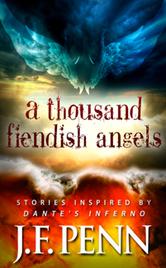 But if you want me to try to call out something that is currently exclusive to Kobo, one that I quite enjoyed is the special “Inferno” tie-in linked short stories that J.F. Penn wrote as part of a major “The Descent” contest that Kobo ran just prior to Dan Brown’s latest big release. Fans of Dan Brown or James Rollins are likely to enjoy the wonderful “Easter Egg” references and enriched links to Dante’s classic work within the pages of J.F. Penn’s A THOUSAND FIENDISH ANGELS – three wonderfully intriguing tales called Sins of the Flesh, Sins of Treachery and Sins of Violence.
But if you want me to try to call out something that is currently exclusive to Kobo, one that I quite enjoyed is the special “Inferno” tie-in linked short stories that J.F. Penn wrote as part of a major “The Descent” contest that Kobo ran just prior to Dan Brown’s latest big release. Fans of Dan Brown or James Rollins are likely to enjoy the wonderful “Easter Egg” references and enriched links to Dante’s classic work within the pages of J.F. Penn’s A THOUSAND FIENDISH ANGELS – three wonderfully intriguing tales called Sins of the Flesh, Sins of Treachery and Sins of Violence.
This is a great way to check out J.F. Penn’s writing so you can enjoy her riveting ARKANE series featuring Dr. Morgan Sierra who is much more than a female “Indiana Jones.”
Here’s <"a href="http://www.kobo.com/ereaders?___store=canada_english_cad&style=onestore">a link to the various readers and free APPs
(Kobo is available on all devices and computers, so you don’t need to own a Kobo to enjoy them.)
Thanks, Mark. Kobo and Indie Bound are exciting places for writers today. We appreciate you sharing your expertise with us.
Darcy’a Note: One of the cool things about Kobo is its partnership with the American Booksellers Association and IndieBound. You can
find all my Kobo eBooks at the Kobo website here . But I’d rather you shop at That Bookstore in Arkansas by following these links:
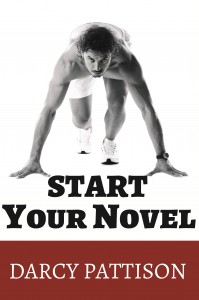
Find the Kobo eBook at That Bookstore's Website
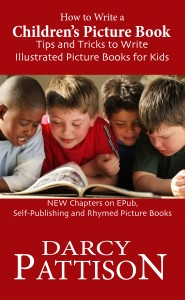
Shop Locally! Thanks for supporting That Bookstore in Blytheville, AR
Intrigued and want to learn more? SelfpublishingPodcast.com did a 1 1/2 hour conversation with Mark that is available on YouTube (rated PG13!).
If you can’t see this video, click here.

START YOUR NOVEL
Six Winning Steps Toward a Compelling Opening Line, Scene and Chapter

- 29 Plot Templates
- 2 Essential Writing Skills
- 100 Examples of Opening Lines
- 7 Weak Openings to Avoid
- 4 Strong Openings to Use
- 3 Assignments to Get Unstuck
- 7 Problems to Resolve
The Math adds up to one thing: a publishable manuscript.
Download a sample chapter on your Kindle.
Periodically, I have to refocus. What am I doing with my time? Is that what I want to do with my time? What have I accomplished this year? It’s one of those times for me and I need to refocus big time.
It’s easy to be swept up in Social Media: Facebook, Pinterest, Twitter, YouTube, and even dipping my toes into doing a podcast for the Ultimate Shrunken Manuscript. My head is full of social media how-tos and tips. This fall, I am planning a series, 30 Days to an Author’s Platform. (If you have questions or suggestions, please add them to the comments!)
But I haven’t written much fiction lately.
The reasons are complicated:
- I am feeling vulnerable, worrying that the publishing world doesn’t like my stories and won’t like this next one, if I write it. (How many of you are with me on THAT one?)
- The industry is changing in confusing ways. Possibilities abound that even a year ago were unthinkable. Read this interesting post about the emotional stages a writer goes through on the journey of becoming an indie writer or a hybrid writer. (Is that a new term for you? A hybrid author is someone who publishes with traditional publishers and self-publishes other stories. I am already a hybrid author–where do I go from here?)
- Of course, there are personal and family situations ongoing that always affect our writing. But that’s personal.
But in the end, writers write.
If I am a writer of fiction and nonfiction, then I must write. Forget the fear, forget the market, forget the personal issues. What story must I tell next?
But, what if I wanted to cross genres and write an adult novel instead? What if I wanted to write a mystery, instead of fantasy? What if I wanted to write a picture book that I know no one will buy, but I just want to tell it? No, no, no. Wrong questions.
What is the next story that I need to tell? Tell it. Get the words on paper.
THEN, worry about marketing and the reaction of the world to what I write. Come on, Darcy. Write. And if YOU need a cheerleader, I say this to you, too. Write!
What I’ve Done to Get Back to Writing
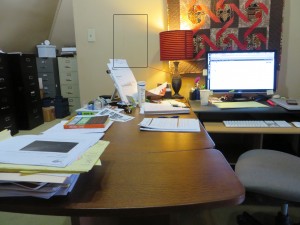
My writing office in the attic of a 3-story Victorian house.
But you want something practical? OK, here’s a couple things I’ve done.
- Encourage writing by changing the environment. Cleared off my desk. Instead of a crush of papers and notes about social media tasks, there’s nothing there but what I need to write fiction.
- Encourage writing by changing the environment. I have also decided not to check email or online accounts in the mornings.
- Encourage writing by enlisting friend’s help. I decided to attend a Master Class in July, partly to reconnect with some writing friends and get pumped up with new ideas. I expect that I will be challenged, provoked, angered, delighted and more. I will come back writing stronger than ever.
- Encourage writing by setting goals. I plan to have a new series plotted by September 1.
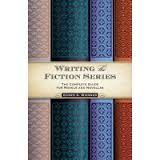 Encourage writing by learning/trying something new. Because I want to write a series, I have bought a couple new books and I am working through the worksheets. Karen S. Weisner’s book, Writing the Fiction Series: The Complete Guide for Novels and Novellas has worksheets that lay out the process of doing a series. Are they perfect? No. Are they useful? Definitely. I don’t have to think as hard about structure and what to do next. It automates the process, so I can focus on the stories. The worksheets are getting me going and will keep me going for a while. And I’ll try her other book, First Draft in 30 Days.
Encourage writing by learning/trying something new. Because I want to write a series, I have bought a couple new books and I am working through the worksheets. Karen S. Weisner’s book, Writing the Fiction Series: The Complete Guide for Novels and Novellas has worksheets that lay out the process of doing a series. Are they perfect? No. Are they useful? Definitely. I don’t have to think as hard about structure and what to do next. It automates the process, so I can focus on the stories. The worksheets are getting me going and will keep me going for a while. And I’ll try her other book, First Draft in 30 Days. - Asking for encouragement. Ok. Encourage away. And encourage ALL your other writing friends this week, too. I am sure they need it, too. Just like you do. We can do it. Let’s write!




By:
Steve Novak,
on 2/19/2013
Blog:
Steve Draws Stuff
(
Login to Add to MyJacketFlap)
JacketFlap tags:
cheap,
indie,
purchase,
buy,
pre-made,
author,
artist,
design,
illustration,
professional,
steven,
novak,
sale,
cover,
self-published,
quality,
Add a tag
So, here's the deal.
I do a lot of covers for a lot of people these days. Sometimes when I whip up something for a client it doesn't exactly work for their book and I have to give it a second go. It's all part of the process. It happens.
Unfortunately, this means that I'm left with a pretty decent cover that doesn't have a home.
Covers are just like people, right? Every cover wants to be loved and every cover deserves a home.
Also, I'd like to at least get my money back for the stock images. That's a part of it too.
With that in mind I've decided to implement the First Annual Pre-Made Cover Extravaganza! (You know it's important because it's in caps.)
Here's how it works: Have a look at the covers below. If you think one of them might work for something you've written all you have to do is drop me a line at [email protected] (or leave a comment in the comments section) and it can be yours.
I'll remove the novakillustration.com watermark, plunk in your title and your author name, and even putz around with the fonts a bit if you think you'd like to try something different. If you like most of the concept but want to make some changes I'm sure we can work out a price that'll make every happy.
I'll do all of that for a measly $40. (Payable through Paypal)
Come on, that's a serious deal. Final images will be sent to you in printable 300dpi quality, as well as three sizes for all of your online needs.
Deal city, people. Deal city.
If you have any questions, don't hesitate to ask.
Steven
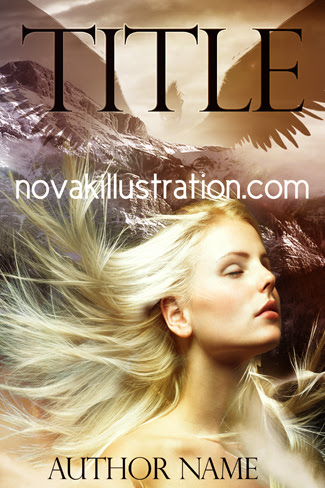
COVER 1 - AVAILABLE

COVER 2 - AVAILABLE

COVER 3 - AVAILABLE
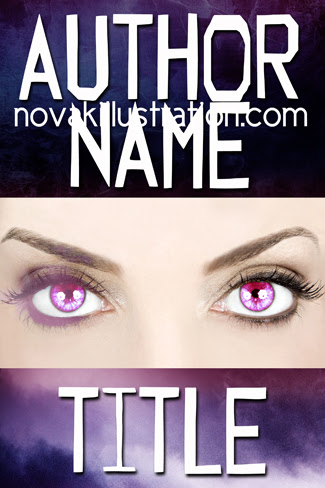
COVER 4 - AVAILABLE

COVER 5 - AVAILABLE

COVER 6 - AVAILABLE

COVER 7 - AVAILABLE

COVER 8 - AVAILABLE

COVER 9 - AVAILABLE
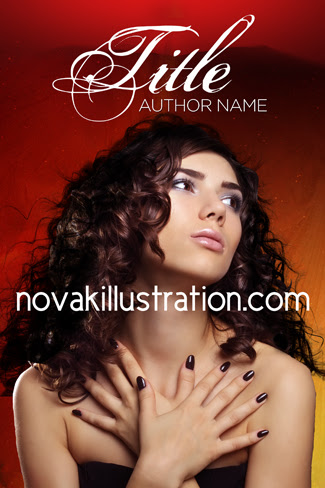
COVER 10 - AVAILABLE

COVER 11 - AVAILABLE
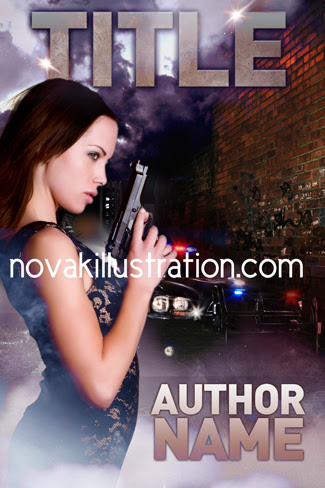
COVER 12 - AVAILABLE
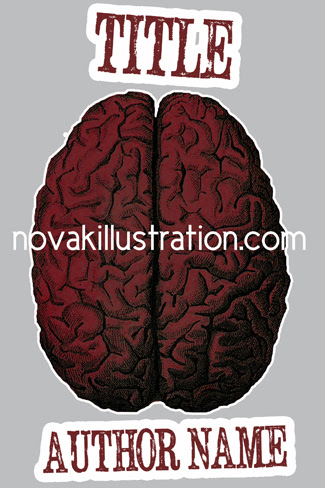
COVER 13 - AVAILABLE

COVER 14 - AVAILABLE
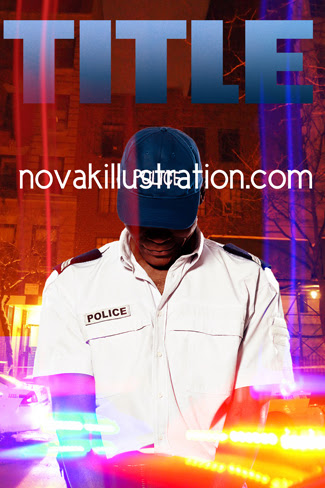
COVER 15 - AVAILABLE
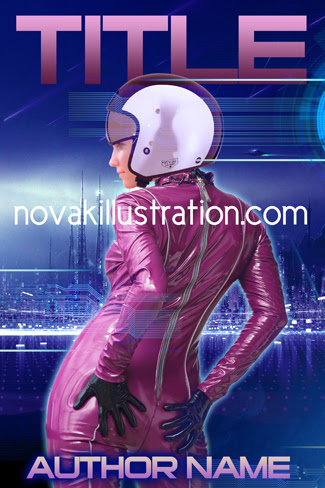
COVER 16 - AVAILABLE

COVER 17 - AVAILABLE
*Before we begin I want you all to be sure to come back next week when the amazing Aubrey Poole, Editor from
Sourcebooks will join us to provide a more in depth look at why having a publisher is a good idea. But now for our Indie experts!
A post from Susan Kaye Quinn on Debunking Some Indie Publishing Myths, combined with Lisa Gail Green’s posts on Indie vs. Traditional kicked off a discussion between Susan Kaye Quinn and Laura Pauling (both indie authors with the Indelibles author group) on indie publishing myths, publishing middle grade, and the new hybrid author. For a peek behind the curtain at the real experience of indie authors today, check it out…
There are too many self-pub books; mine will be lost in the pile!
NOT TRUE.
 |
| Laura Pauling |
Laura: Sue’s post is a great list of myths (about indie publishing). (There are) so many more too when it comes to why authors self publish and quality issues. But Lisa has definitely covered some major ones. :) We're never doomed unless we quit trying.
Susan: I’ve been countering some myths on the blogosphere lately, so I collected them into a post. Interestingly, I’ve heard less lately about the “all SP (self-published) books are trash” meme – maybe I’m just hanging out with the cool kids now.
Laura: I see the knocks on quality about SP from posts in the traditional world; usually people who don't know much about it or who really don't know how to find the well written books. I just walk away. :)
You have to publish fast to be a successful indie author.
NOT TRUE.
And I agree, the whole rush, rush thing is slightly exaggerated. A career will not be made or broken based on that factor. Does rushing books to market help? If they’re quality. And it helps get the author to a point in his/her career where they could be full time, but it's not the determining factor.
 |
| Susan Kaye Quinn |
Susan: Getting quality books out quickly helps for the same reason that being 10 years down the road in my career would help – I’d have more to sell. But I don’t see a good way to short-cut that process – you have to actually write the books and earn the fans along the way.
I try to insulate myself from the indie naysayers of the world – it doesn’t help to listen to people who are dissing what I’m doing. I’ll let them play in their sandbox and I’ll play in mine.
Laura: I know what you mean. I'm attending and volunteering at NESCBWI (New England Society of Children’s Book Writers and Illustrators) this spring. I have to seriously debate whether it's worth my $$ in the future. Ansha Kotyk is presenting and will be able to sell her self-published book in the bookstore and sign, so I'm curious to see how that goes for her. :)
Have you decided what to do with your middle grade? Query? I'm torn about the future. I'll continue to write and self publish some companion novels to promote my middle grade that's out. And I have another idea for a series, that I'll self publish. I’ll see what happens.
Susan: Everything I see still tells me that middle grade indie books struggle. Writing and publishing really are two separate functions in my brain – I write what I love, then figure out the best way to publish. Speaking of: has your small press (Pugalicious) gotten good reviews/distribution for your MG novel about the Mayans? Has that opened any doors you wouldn’t have had with self-pub?
Laura: Honestly, publishing with the small press has certain advantages. Pugalicious Press did fantastic job with editing and cover design. I had a one-hour phone conversation with a marketing specialist. I think it also opens doors for certain contests, if a writer cares about that. I could submit for the bigger awards.
But, over all, in all honestly, it doesn't help as far as distribution. But, let's say, a book took off, then it would be much easier to get into bookstores b/c bookstores would see your book as traditionally published. So it has the potential to open doors that I wouldn't have self-publishing.
I think querying a middle grade would be much easier knowing I was writing and self-publishing other works. That my career didn't hinge on that one manuscript. Middle grade is really hard, even though everyone clamors for it. But, there is a certain freedom knowing that if they're not interested I can go with a small press or self publish. It frees me to write for me, not for them or what I think they're looking for. I don't think I realized how much that influenced me until I started self publishing.
Susan: This is SO true – and it’s really hard to explain it to people until they’ve self-pubbed and seen it for themselves. There’s an unrestrained variety in self-pub. You’re not locked into what publishers see as having high sales potential.
Laura: I think some authors truly feel that self-publishing is giving up the dream. I guess if you want to be published traditionally, than it could be. But underlying what we've been told for years, is the dream of reaching readers, of possibly making an income. That's never been more possible than it is today.
Susan: I think it’s definitely ok to pursue the dream (of traditional publishing). In fact, I think it’s imperative that you do so, if that’s your dream, until it plays out, whatever the outcome.
Laura: I do understand writers not wanting to take on all the aspects of self-publishing, so ultimately it's their choice. But I see traditional publishing just as stressful and time consuming as far as the business aspect, worrying about selling through and the huge pressure (along with excitement) that comes with release.
I'm so interested to see what the next couple of years bring, but I see over and over again that 2013 is the new normal. The gold rush is over. Now it's about self-published authors playing it smart, seeing the long tail, producing good work, improving craft, and sticking to a schedule. And most importantly, not giving up. If something isn't selling well - try something else.
What do you think of the hybrid author these days? Advantages/disadvantages?
Susan: I’m not sure I know what a hybrid author is any more. I thought I knew – it was an author who was trad-pubbed then went indie or who was an indie success and got plucked from the bestseller list and offered a contract from the big six.
These days, I think less and less in terms of publication route and more in terms of distribution, intellectual property, and opportunities. I just finished putting out a live-action trailer that has helped me connect with film agents who might be interested in shopping film rights. I’m working on an audio version of Open Minds where I’ll be revenue sharing with the narrator. And I’m exploring possibly translations to other language. Meanwhile, indie superstars like Hugh Howey and Colleen Hoover are negotiating print-only deals with publishers.
All these things used to be only available to trad-pub authors, but now I see this as the true future for hybrid publishing – managing your intellectual property through all the most effective channels (trad-pub for print, indie for e-rights, film agents or indie producers for the film world, indie collaborations for things like graphic novels, audio books, and translations into foreign languages).
Indie publishing is a whole new business model, and authors are still feeling out all the pathways to success.
It’s a brave new world. Still.
Laura: Definitely!
Personal Satisfaction
Indie:- Pros:
- You do it your way.
- You get to see your book out there in the hands of readers.
- Cons:
- You may not have shelf space or an end cap.
- You won't get that third party recognition from the big guys. Unless of course you sell above 50,000 books and attract a little attention, which is difficult to do.
Traditional:
- Pros:
- You made it the "hard" way! You have the recognition.
- You are dealing with others who can do certain things for you that you don't want to deal with yourself.
- Cons:
- You may have to struggle to sell more books if you are a mid-list author, which most people are.
- It may take years. Even decades.
Yup it all comes down to this. What is it that drives us? We don't write because we think it's glamorous - those that do are probably due for a checkup. We write because we HAVE to. But beyond that we each have different goals and preferences.
Over this series we've examined pros and cons to both Indie and Traditional publishing. Does it look like one is better than the other? There's no knockout here. I believe they are both valid and wonderful ways to pursue our art. That's why I'm pursuing both.
Now I don't expect you to rely on my word for it. In the next couple weeks I'm going to have some better authorities weigh in on BOTH sides. Next week we will start with the amazing Susan Quinn and Laura Pauling, both successful Indie authors, discuss the benefits of Indie publishing from their viewpoint. Then we'll give the other side a chance. :D So don't forget to stop by!
Audience
Traditional:- Pros:
- They can get the word out and are featured prominently at chain bookstores and online. So you have a boost right away
- People trust what they know
- You have a better chance at hitting the best seller list and your book becoming big
- Cons:
- They may be trying so hard to mass market that they miss the real gem inside your book
- If it flops, it usually happens right away and it's tougher to get a second book deal
Indie:
- Pros:
- You can publish a book designed to fit the needs of a small or particular audience
- You build your name as an author over time and by word of mouth, so if you don't "make it big" right off the bat, you're still doing just fine
- Cons:
- It's tough to get noticed
- You have to work hard to get the book in the hands of the right people to spread the word
What do you think? Did I get that right? It's tough to say, but that's what I've gleaned so far. Next time? The final round: Personal Satisfaction.
Quality
Indie:- Pros:
- You control the quality of everything from each word to the cover. It's all your decision and if it doesn't fit your vision, you don't have to do it.
- Cons:
- You control the quality. Yup here we go again! See, here's the thing... Having a good editor is priceless. I truly believe if you don't have your book edited, you shouldn't put it out there. There are things you just can't see because you are too close to it. Great beta readers are important, but you need a healthy line edit and of course copy editing as well to make it perfect - or as close as you can get it. It's so important that I can't stress this enough. You have to rely on others to help you out. A great cover artist is important too. You have final say - and that's awesome! But you have to take your time and approach it like a business and DO IT RIGHT.
Traditional:
- Pros:
- You are dealing with a known quantity. You can go to B&N and see their work for yourself. You can rely on the professionals and know that you are in good hands.
- Cons:
- You usually don't have much of a say (if any) in things like cover art and design. Sometimes even marketing. I know of authors who've had issues with the ages their publishers have suggested on both ends of the spectrum (too young and too adult).
Confused yet? Next week is round 4: Audience.
Timeline
We all know how long it takes to write a book. We also know how long it takes to publish one. Here are my pros and cons on the time involved in both traditional and indie publishing.
Traditional:- Pros:
- It may take a while, but you know they're doing it "right".
- If it's delayed even longer, it's possibly because your book will do better if released at another time.
- Cons:
- It typically takes a MINIMUM of a 1 1/2 years from deal to publication.
- Many times the list gets shuffled and your release is delayed. Sometimes it's better for the house and not your specific book.
Indie:
- Pros:
- You control the timeline. If you decide to put all your effort and time in, it's not like you're splitting that between dozens of other books and submissions, so you can push it through faster. *note this will also appear as a potential con below.
- You can put out secondary novels/sequels faster than a traditional publisher would, potentially reaching more readers/fans faster.
- Cons:
- You control the timeline. Yup. You might be so excited or so sure your book is perfect that you don't invest the time necessary to do it "right" as sited above. That's up to you as a professional and a true writer.
- You can become so overwhelmed with trying to act like the publisher that you forget to spend time writing and revising and subsequent books can suffer.
So there you have it. My second edition. What can you add? Next week is something I touched on today: Round 3. Quality
This isn't about competition. Most people think it is. That only one format can come out on top. I'm not here to play that game. Personally I believe they can coexist and in fact, I'm going to continue to pursue both. But I do want to take a look at the pros and cons of both as I see them in a series of blogs. I know there are so many people out there better researched than I, but maybe you're just as confused as I was not that long ago and perhaps a layman's view will come in handy.
Today I want to look at Publicity.
Traditional: - Pros:
- Sometimes you get a publicist!
- You have a name behind you
- You have wider exposure in print
- Cons:
- Most new authors have to promote themselves
- Other books from the publisher may take precedence
Indie/Small Press:
- Pros:
- You can release more books in a shorter period of time (provided you still use professional editing/copyediting/design etc.)
- The publisher (sometimes you) might be better invested in your book.
- Cons:
- You definitely have to promote yourself
- You can pretty much count B&N out unless you are doing NOOK.
The truth is I'm not sure I see much of a difference in work unless you are one of the lucky few the big five decide to help publicize. The biggest difference is in traditional print and availability. It's not impossible with Indie by any means, but in a large chain it is.
What did I miss? Fill me in!
Guess what? I'm going to be a guest vlogger on the YARebels for today and every Wednesday for the month of August.This week on the Rebels, we are talking about Independent Bookstores. There are actually two Indies in the Orlando area (Thursday is taking B&L) and I did a spotlight on The Book Worm.So check out my vlog and then go out and shop at your local Indie!
This past weekend’s CAKE show in Chicago was important for a few reasons, but mostly because CHicago has a rich vibrant indie/mainstream comics scene, and having an event to take advantage of it is a boon to the entire Midwest. The show had a stellar guest list, so we’ve been eagerly awaiting word on how it did.
So, from reading a few reports the word seems to be: great show, so-so sales but awesome atmosphere.
First, local boy Kiel Phegley has one of his insanely detailed and cogent reports:
Though it was held almost entirely on the eighth floor which also served as partial home to the Zine Fest (some CAKE panels took place on a stage downstairs), the layout for the festival distributed the well known talent and first timers evenly in a circular pattern. So while one room may lay off the main stretch of tables for the show, it would be anchored by the likes of Jeffrey Brown, Kevin Huizenga and Ted May. Meanwhile, the hall stretch on the far side of the auditorium was the weekend home of Anders Nilsen, Box Brown and Charles Forsman. Moves like that meant that fans of Gabrielle Bell or Julia Wertz or whomever was set up at CAKE would circulate around, and there were few complaints of dead spots or “no man’s land” areas for the festival.
This observation is actually refuted in what we consider the Romanesko of the indie comics world,
the Secret Acres report. It too is overall positive:
But the truth is that nothing went horribly wrong this past weekend in Chicago, and the CAKE gang are due some deep thanks and heartfelt congratulations from the comics world. For its inaugural weekend, CAKE was meticulously organized and executed, and pretty much everything that you’d hope for with a debut comics festival.
But also frank about some shortcomings:
Sales were soft. We’re not going to gloss over that one, so it might as well be the first thing we hash out in the blog. Some tables did well, but most people we talked to were at least mildly disappointed in their earnings. While traffic was generally steady over the course of the weekend, there were some major lulls in activity. We weren’t wowed by our own earnings, but we weren’t crushed, either. It was right in line with how we did at our first Stumptown or our first BCGF. Taking into account airfare, hotel, shipping books and table fees, we ended up a bit in the red, but it doesn’t sting much considering we went to Chicago with CAKE being a total unknown. We could have hedged our bets, waited for year two, or put all the chips on the table and treated CAKE like a proper festival. Because our guy Edie Fake was working on CAKE, this was a no-brainer for us. We’d follow him into hell. We debuted Gabby Schulz’s Weather, flewSean Ford out to promote his Only Skin, and generally behaved as if we were going to SPX(minus the banners and our mini-comics ranch, which was a mistake on our part, but we’ll get to that). The fact that we didn’t come home with cash to spare strikes us as eminently tolerable given that this was the first CAKE ever and we were high rollin’ it a bit.
Secret Acres take is that the show is incredibly promising, and that kind of enthusiasm will hopefully give it the support to get to the level it should be.
And finally, Gabrielle Bell also attended and reports in the way only she can:



























































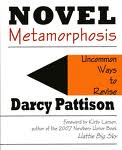


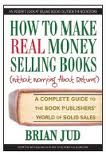
Steve,
I love the covers that you have done for Mary Ann Bernal. And looking at these you are very talented. Keep up the good work!
Wow. These are amazing. I really wish I had a book that needed a cover right now. But I will definitely be putting you on my list for stuff for the future.
K - Much appreciated and I'll do my best to keep up the good work, mostly because it also keeps the bill collectors happy. ;)
EMILY - Thanks! If and when you do find yourself in the market for a cover drop me a line at [email protected] I'm always there. Literally. I have no life. ;)